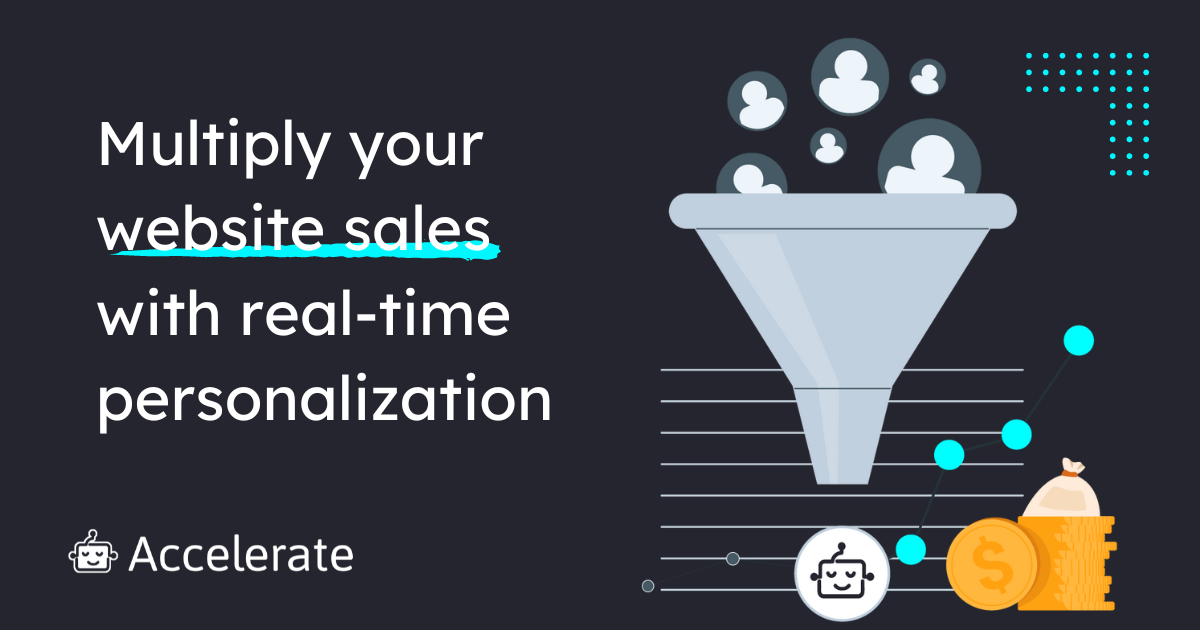
Sometimes it is inevitable, we have to change the domain and there is no way around it, but to do it in a conscious and organized way. That’s why it is essential to be aware of everything that can result from it in order to minimize damages. The change of domain will have an impact on the CRO, but also on many other aspects, however, let’s start from the beginning.
For the newcomers: CRO is a systematic process aimed at increasing the percentage of website visitors who take the desired action. This action could range from making a purchase or signing up for a newsletter, to any other goal deemed valuable by the website owner. At its core, CRO involves understanding how users navigate through a site, what actions they take, and what’s stopping them from completing their goals. On the other hand, a domain name does more than just act as a digital address for your website. It’s a critical component of your brand’s identity and plays a significant role in marketing and communication. A well-chosen domain name can influence user perception, search engine optimization, and brand recognition. It acts as the first impression for your site visitors, potentially affecting their decision to engage further with your content or services.
Table of Contents
Reasons for Changing a Domain Name
This alteration is often motivated by strategic business considerations, each aiming to enhance the company’s online presence and operational effectiveness.
Rebranding Efforts
One of the most common reasons for changing a domain name is rebranding. As companies evolve, their original brand identity may no longer represent their current values, target market, or expanded range of services and products. A new domain name can signal a fresh start or a significant transformation, helping to realign the company’s online presence with its updated brand strategy. This change can reinvigorate the brand’s image, making it more relevant and appealing to current and potential customers.
Legal Issues or Trademark Conflicts
Sometimes, a business may find itself embroiled in legal challenges or trademark disputes over its domain name. To resolve these issues and avoid potential legal ramifications, a company might opt to change its domain name. This proactive approach can help safeguard the business against lawsuits, financial losses, and damage to its reputation, ensuring a smoother path forward.
Domain No Longer Reflects Business Focus
As businesses grow and adapt to market demands, their focus and offerings may shift. A domain name that once perfectly encapsulates the essence of the business might become outdated or misleading. Changing the domain name to better reflect the current business model, products, or services can improve clarity for customers and reinforce the brand’s market position.
Improving SEO or Targeting a Different Audience
A strategic name change can significantly impact search engine optimization efforts and audience targeting. If the original domain name lacks keywords relevant to the business’s core offerings or intended audience, a new domain name can incorporate such terms to enhance visibility and attract more targeted traffic. Additionally, a more memorable or authoritative domain name can improve click-through rates and drive higher organic search rankings.
Merging with or Acquiring Another Company
Mergers and acquisitions often necessitate a reevaluation of the combined entity’s online presence. The resulting company may choose to adopt a new domain name that reflects the merged identity, symbolizing unity and a new strategic direction. This change can streamline brand communication, simplify marketing efforts, and ensure a cohesive online presence that leverages the strengths of both entities.
How Changing a Domain Name Affects CRO
Brand Recognition & Consistency
The decision to change a domain name carries profound implications for brand recognition within the sphere of conversion rate optimization. A domain name is more than a mere web address; it’s a beacon of reliability and a marker of consistency for users. Changing this established symbol can disrupt the connection a brand has built with its audience, impacting user behavior and perceptions. The immediate effects, such as confusion and eroded trust, alongside the long-term challenge of decreased site traffic due to findability issues, highlight the significant risks involved.
How to Prepare?
- Communicate Early and Often: Begin informing your audience about the domain change well in advance. Utilize various channels such as email newsletters, social media, and website announcements to reach your audience across multiple touchpoints.
- Maintain Visual and Messaging Consistency: Ensure that your branding remains consistent across the old and new domains. This helps in retaining a sense of familiarity among your users, easing the transition.
- Monitor User Feedback and Behavior: After the transition, closely monitor how your audience is responding to the change. Pay attention to user feedback, site metrics, and behavior patterns to identify any areas of confusion or concern.
- Engage with Your Audience: Keep the lines of communication open. Encourage feedback and address any concerns or questions your audience might have about the new domain. This engagement is key to rebuilding trust.
- Preserve the Old Domain: If possible, maintain control of your old domain for a significant period after the transition. This allows for a smoother transition for users who may not be immediately aware of the change.
- Develop a Comprehensive Rebranding Strategy: Before implementing the domain change, outline a rebranding strategy that encompasses all elements of your brand’s presence, ensuring that changes reinforce rather than undermine brand identity.
SEO Impact
The transition to a new domain name resets the SEO authority that a site has painstakingly built over time. This authority, crucial for search engine rankings, is influenced by factors like backlinks, content quality, and user engagement. Losing the accumulated SEO equity due to a domain change poses significant challenges, potentially leading to decreased visibility, reduced organic traffic, and consequently, fewer conversions. The importance of maintaining SEO performance during this transition cannot be overstated, as it directly impacts a site’s ability to attract and retain visitors.
How to Prepare?
- Audit Existing SEO Performance: Conduct a comprehensive review of your current site’s SEO health, including backlinks, keyword rankings, and content performance. This audit will serve as a benchmark for comparison post-transition.
- Engage in Robust Post-Launch SEO Efforts: Once the new domain is live, actively work on building its SEO authority. This includes optimizing content, building new backlinks, and ensuring that the site’s structure is search-engine friendly.
- Monitor Performance Relentlessly: Use SEO tools to monitor the new site’s performance closely. Keep an eye on rankings, traffic patterns, and user behavior to quickly identify and rectify any issues that could impact SEO.
- Update All Digital Assets and Profiles: Ensure that all references to your website, from social media profiles to business directories, are updated to reflect the new domain. Consistency across the web helps search engines understand and index your new domain more effectively.
Trust and Credibility
Trust and credibility form the cornerstone of customer relationships in the digital world, with a domain name serving as a critical element in establishing these perceptions. Comparable to a physical storefront, a domain name signifies reliability and security to online visitors. A change in this domain can significantly unsettle customers, affecting their sense of familiarity and safety, and consequently, their willingness to engage with the brand online. The psychological impact of such a change cannot be underestimated, as it introduces uncertainty and skepticism among users accustomed to the stability and reliability of the established domain.
How to Prepare?

- Ensure Branding Consistency: Keep the visual identity and user experience as consistent as possible across the new domain. This includes maintaining the same logo, color scheme, typography, and overall design language that your audience is familiar with.
- Use Social Proof to Your Advantage: Feature customer testimonials, reviews, and case studies prominently on the new domain. This social proof serves as a powerful tool in reassuring existing and potential customers of the continued reliability and quality of your brand.
- Highlight Security Measures: Reassure users about the security of their data on the new domain by clearly displaying any relevant certifications or security badges. This reinforces the message that their safety and privacy are top priorities for your brand.
Technical Issues in Domain Name Change: The Critical Role of 301 Redirects
The technical transition accompanying a domain name change is intricate, with the setup of 301 redirects standing out as a pivotal step. These redirects are essential not just for preserving search engine rankings but for maintaining user experience and conversion rates.
How to Prepare?
- Perform Rigorous Testing: Before making any changes live, conduct extensive testing to confirm every redirect leads to the correct page, thereby guaranteeing the integrity of the user journey.
- Monitor Site Health: Post-implementation, continuously monitor the site for technical issues, using tools to detect broken links and other problems that could impact site performance.
- Revise External References: Actively seek out and update references to the old domain across the web to direct traffic efficiently to the new domain, thus bypassing the need for redirects.
Pathmonk Accelerate: Automated Conversion Rate Optimization
Pathmonk Accelerate is an AI-powered tool designed to optimize websites for higher conversion rates automatically. It functions as an intelligent layer on top of existing websites, analyzing user behavior in real-time to deliver personalized experiences aimed at boosting conversions.
Increase +180%
leads
demos
sales
bookings
from your website with AI
Get more conversions from your existing website traffic delivering personalized experiences.

Unlike traditional CRO strategies, which often require significant manual effort and continuous tweaking, Pathmonk Accelerate offers a more efficient, automated approach. It aims to enhance user engagement, lead generation, and sales through smart interventions based on AI-driven insights.

Pathmonk Accelerate harnesses the capabilities of AI in several key ways to enhance conversion rates automatically:
- Real-time User Behavior Analysis: At the heart of our tool is its ability to analyze user behavior on a website in real time. By understanding how users interact with the site, the AI can identify patterns and moments where interventions can increase the likelihood of conversion. This might include identifying when a user appears to be hesitating on a checkout page or when they’re spending a significant amount of time on a product page without taking action.
- Personalized User Experiences: Utilizing the insights gathered from user behavior analysis, Pathmonk Accelerate dynamically personalizes the website experience for each visitor. This could involve presenting personalized content recommendations, tailored call-to-action buttons, or custom messaging that resonates with the user’s interests and intentions. By making the user experience more relevant and engaging, the tool aims to guide more visitors towards conversion.
- Automated Optimization: One of the key advantages of Pathmonk Accelerate is its ability to automate the optimization process. The AI continuously learns from user interactions and adjusts its strategies accordingly, without the need for manual intervention. This means that website owners can enjoy ongoing improvements in conversion rates as the AI fine-tunes its approach based on accumulating data and insights.
- Performance Monitoring and Insights: Beyond optimizing conversions, Pathmonk Accelerate provides valuable insights into website performance and user behavior. This data can inform broader marketing strategies and website design decisions, offering a deeper understanding of what drives conversions on the site.
Conclusions
A well-chosen domain name serves as a cornerstone of a brand’s online identity, influencing user perception, SEO, and brand recognition. The decision to change a domain name, driven by factors such as rebranding, legal issues, shifts in business focus, SEO optimization, or mergers and acquisitions, is not made lightly due to its far-reaching impacts on a business’s online strategy. A new domain name can disrupt brand recognition, affect SEO rankings, and challenge the established trust and credibility of the audience.
To mitigate the potential adverse effects of a domain name change on CRO, businesses must embark on a path of careful planning, transparent communication, and meticulous execution. This includes the strategic use of 301 redirects, continuous monitoring of traffic and conversion metrics, and efforts to rebuild trust and maintain branding consistency.





